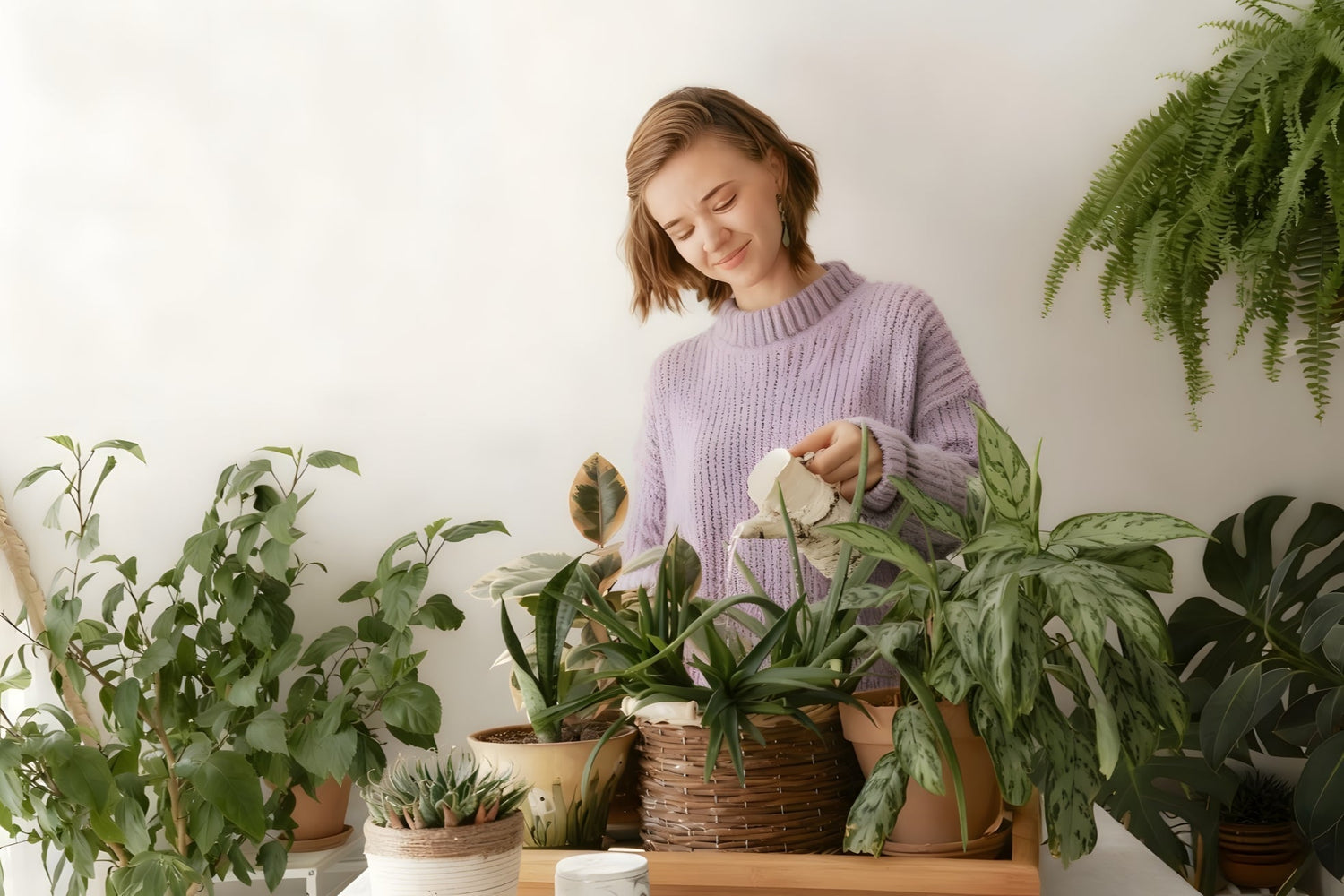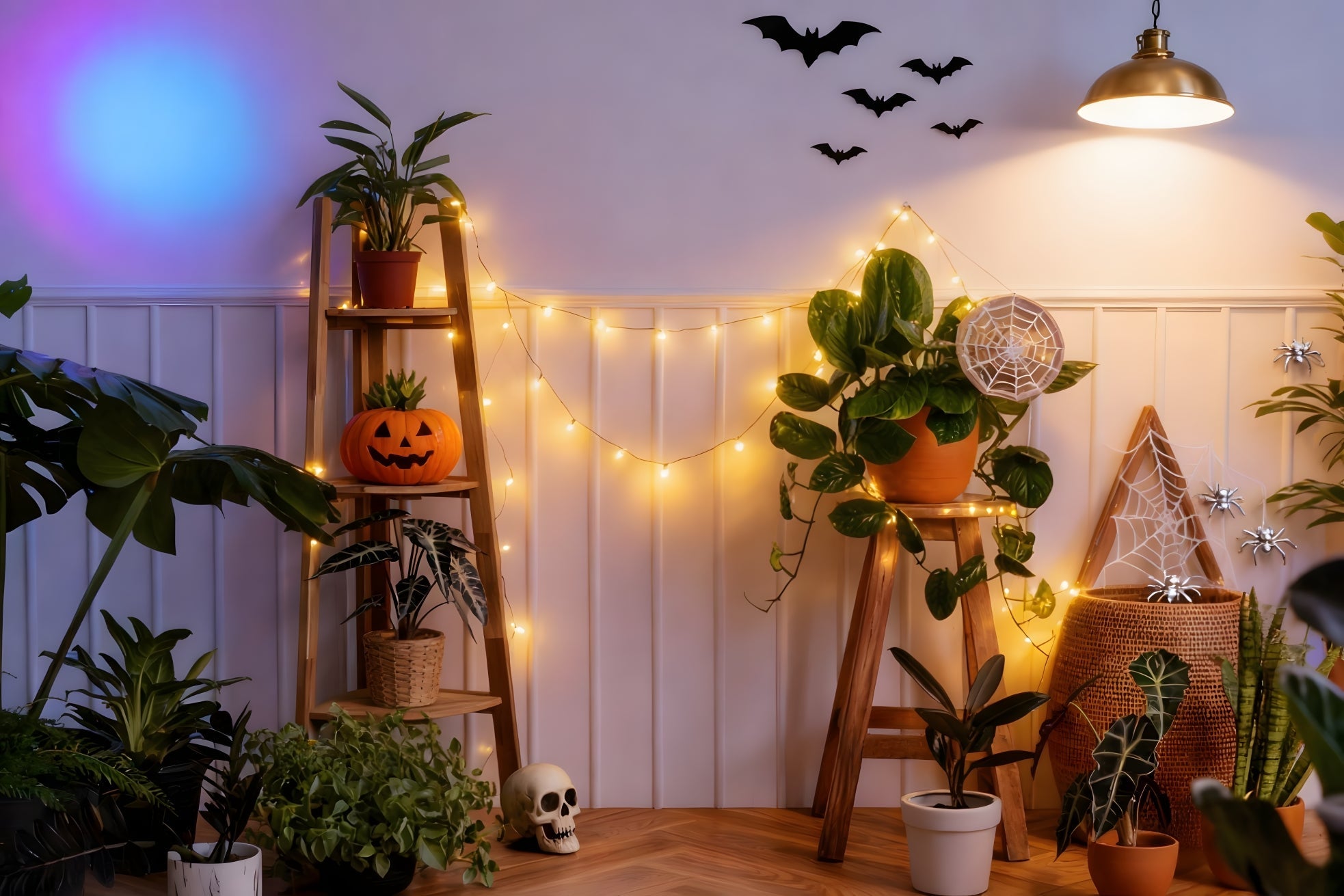Well, hello November. The cozy blankets are out, the soup is simmering, and the heat just kicked on. But while we're settling into comfort season, our houseplants are facing their biggest challenge of the year. Shorter days, weaker light, and dry air from heating create a whole new world for them.
I used to think my plants were just meant to "get by" until spring. But after seeing my pothos push out new leaves and my orchid gear up for another bloom, I realized they're not quitting—so why should we? November isn't about stopping plant care; it's about shifting it. It's about moving from a growth mindset to a maintenance mode that builds strength.
This guide walks you through the seven most impactful things I do for my plant family each November. These simple tasks set them up for a healthy, vibrant winter, ready to explode with growth when spring finally returns.
Your November Houseplant Checklist at a Glance
- The Autumn Tidy-Up: Prune & Propagate
- The Great Pest Patrol: A Winter Defense Plan
- Solve the Winter Light Crisis
- The Art of Winter Watering
- Creating a Mini Tropical Getaway
- A Quick Tool Spa Day
- Letting Tired Plants Take a Nap
The Autumn Tidy-Up: Prune & Propagate
The Orchid Rebloom Trick
That gorgeous moth orchid (Phalaenopsis) that bloomed for months might now sport a bare stem. Before you consider it a lost cause, know this: you can often coax it into a second act. Find the little green, bumpy nodes on the flower spike. Grab clean scissors and snip the stem about an inch above one of them. Cutting different spikes at different heights can encourage a more interesting, staggered show next time.
Fall Propagation: Your Free Plant Hack
Think propagation is only for spring? Think again! Stable indoor temperatures are perfect for rooting cuttings. My golden pothos always gets leggy by fall, making it the perfect candidate for a haircut that gives me more plants.
Snip a long vine just below a leaf node. This tells the mother plant to push out new growth. Chop the vine into smaller pieces, each with at least one node. You can root them in a jar of water or pop them directly into damp perlite for faster soil transition.
The Great Pest Patrol: A Winter Defense Plan

Turning on the heat is our comfort cue, but for pests like spider mites, it's an invitation. They thrive in warm, dry air. A thorough check now prevents a full-blown infestation in deep winter.
Inspect Like a Pro
·Get your detective hat on. With a flashlight, check these key areas:
·Under the Leaves: Ground zero for spider mites and aphids
·In the Leaf Axils: Favorite hiding spot for mealybugs
·The New Growth: Tender leaves attract pests
·Soil & Pot Bottom: Look for fungus gnats
Winter Pest ID Chart
|
Pest |
What to Look For |
Immediate Action |
|
Spider Mites |
Fine webbing, yellow stippling on leaves |
Isolate plant. Wipe leaves. Increase humidity. |
|
Mealybugs |
White, cottony masses in leaf crevices |
Dab with rubbing alcohol on cotton swab |
|
Fungus Gnats |
Tiny black flies around soil |
Let soil dry out. Use sticky traps. |
Make Your Home a Pest-Free Zone
Prevention beats cure every time.
·Clean Up: Remove fallen leaves from soil surfaces
·Wipe Leaves: Use a soft, damp cloth to remove dust and pest eggs
·Increase Airflow: Crack a window on mild days
·Boost Humidity: Group plants or use a humidifier
·Strong Light is Key: According to University of Florida's IFAS Extension (source), light is crucial for photosynthesis and plant health. In winter, a quality LED grow light acts like a vitamin supplement, helping plants stay robust and naturally pest-resistant.
Solve the Winter Light Crisis (& Bring the Sunshine Indoors)
Why Your "Bright" Window Isn't Enough
I learned this lesson the hard way. My "perfect" east-facing shelf measured only 200 foot-candles on a November day—less than half what many plants need. The sun's low angle and shorter days drastically reduce light intensity indoors.
Your Guide to the Best LED Grow Lights for Your Home
The solution? Modern full-spectrum LED grow lights. They're cool, energy efficient, and cast pleasant, sunny light. If you wonder "do grow lights use a lot of electricity?" rest easy—they use minimal power compared to old options.
Here's how to choose:
·For Plants Army: The SANSI BR series LED grow bulb screws into any standard lamp, making it a versatile professional grow light for home use.
·For Plant Shelves: A easy light like the SANSI LED puck grow light is perfect for targeted led light plant growth.
·For Style-Conscious Spaces: Elegant standing grow lamps and Wall Mounted LED Grow Light designed as grow light vertical solutions blend seamlessly with home decor.
Beyond Houseplants: Grow Lights for Your Kitchen Garden
Don't stop with ornamentals! The same technology powers grow lights for veggies and herbs. For this purpose, a 25W grow light bar can transform a shelf into a productive indoor greenhouse with lights.
The Art of Winter Watering: Ditch the Guesswork
Overwatering is the number one plant killer in winter. Plants drink slower, but our watering habits often don't adjust. The biggest mistake? Watering when just the top inch feels dry.
Your Go-To Tool: The Soil Moisture Meter
This inexpensive tool changed everything for me. It reveals what's happening in the root zone where it matters. Push the probe deep into the pot, near the bottom.
Real-Life Example: My jade plant's surface soil was dry and pulling from the edges, screaming for water. But the meter showed plenty of moisture below. I avoided certain root rot.
Alternative Methods:
·The Heft Test: Learn how heavy the pot feels when wet vs dry
·The Chopstick Method: Push a chopstick deep into soil; if it comes out clean, it's time to water
Pro Tip: When you do water, do it thoroughly at the sink until water runs freely from drainage holes.
Creating a Mini Tropical Getaway: Humidity Hacks That Work
Crispy brown leaf tips? Thank your furnace. Misting helps for about ten minutes. Let's talk real solutions.
Skip the Pebble Trays
The evaporation effect is minimal and too localized to matter much.
The Cloche Solution
For special plants like miniature orchids or nerve plants, nothing beats a glass cloche or terrarium. It creates an instant humid biome. Lift it every other day for air exchange.
The Group Huddle
Cluster humidity-loving plants together. Their collective transpiration creates a beneficial microclimate. Add a small humidifier nearby for maximum effect.
A Quick Tool Spa Day: A Ritual for Sharp & Clean Cuts

After a year of snipping and pruning, your tools deserve love. Dirty shears can crush plant tissues and spread disease.
Natural Cleaning Paste
Mix juice from half a lemon with 2-3 tablespoons of table salt. The citric acid breaks down sap and rust while salt scrubs. Slather on blades, wait 30-60 minutes, then scrub with an old toothbrush.
Final Steps
Dry blades completely, then apply a tiny drop of mineral oil to the pivot point. This simple ritual extends tool life for years.
Letting Tired Plants Take a Nap: The Gift of Dormancy
Some plants need winter rest. Helping them go dormant conserves energy for a stronger spring return.
Oxalis (Shamrock Plant)
When it looks straggly, gradually reduce then stop watering. Move the pot to a cool (45-55°F), dark place. In early March, return to light and water—it will re-sprout with fresh energy.
Tuberous Plants (Colocasia, Caladium)
After foliage yellows, dig up tubers. Brush off soil, air-dry for a day, then store in dry peat moss or newspaper in a cool, dark place. Replant in late spring for a fresh start.
FAQs: Your November Plant Questions, Answered
Q: Are grow lights safe for people and pets?
A: Quality full-spectrum LED grow lights are perfectly safe, emitting no significant UV radiation—just like standard household LEDs.
Q: How long do LED grow lights actually last?
A: This is a major advantage. High-quality models like SANSI's are rated for over 30,000 hours—many years of reliable use.
Q: Can I use these lights to grow vegetables indoors?
A: Absolutely! Grow lights for veggies and herbs provide the consistent, strong light seedlings and leafy greens need to thrive indoors year-round.
Q: What's the difference between a regular LED and a horticulture light?
A: While both are LEDs, the best LED horticulture lights provide specific light wavelengths that drive efficient photosynthesis and promote healthy plant development.
As we embrace November's slower rhythm, our plant care adapts to match. It's not about doing more, but being more observant. A deep drink only when needed, a clean leaf, and perhaps supplemental light can keep your indoor jungle not just alive, but truly joyful all winter.
Here's to your warm, bright, and green season ahead!



